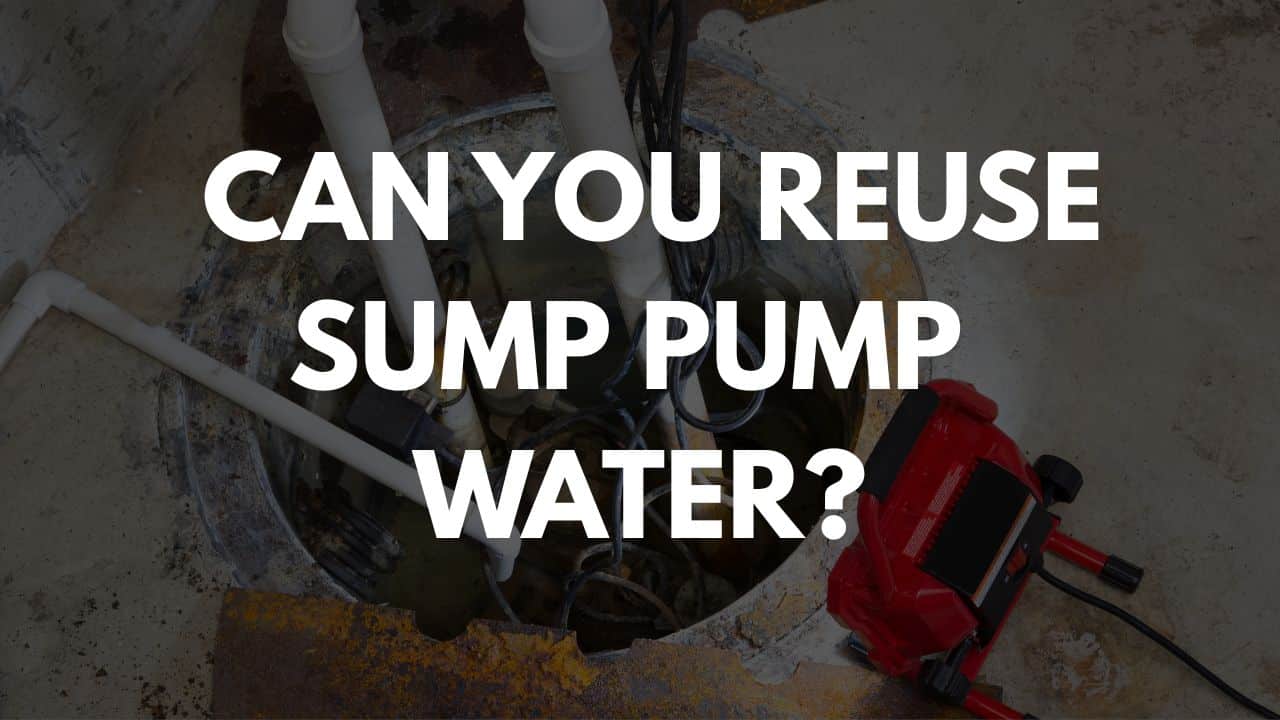
Sump Pump Water Reuse: Is It Safe for Lawns, Gardens, or Cleaning?
As a handyman who’s spent years crawling through basements, solving drainage issues, and helping homeowners protect their properties, I’ve had this question come up more times than I can count: “Can I reuse the water from my sump pump?”
The short answer? Yes—but not for everything. If you’re a homeowner looking to be a little more resourceful or eco-conscious, this guide will help you understand when, where, and how to safely reuse sump pump water.
🌊 What Is Sump Pump Water, Really?
Sump pump water usually comes from rain, snowmelt, or groundwater that seeps into your home’s foundation. It collects in a sump pit and is then pumped away to prevent flooding. In most cases, it’s not exposed to sewage, but it can contain:
- Soil and sediment
- Mold spores or bacteria from damp environments
- Fertilizer or pesticide runoff (especially if you have treated lawns nearby)
- Rust or debris from old pipes or fittings
So while it looks clean, it’s technically considered graywater—not safe for drinking, but often fine for certain outdoor uses.
🌿 Safe Uses for Sump Pump Water
Here are the best, safest ways to reuse your sump pump water:
1. Watering Lawns and Ornamental Plants
This is the most practical reuse. As long as the discharge area isn’t polluted, using sump water on your lawn or flower beds is a great way to reduce water bills and make use of a resource already on your property.
Pro Tip: Use a bucket or hose splitter connected to your discharge pipe to redirect water into rain barrels or directly to landscape beds.
2. Flushing Outdoor Dirt or Cleaning Tools
Have muddy garden tools, concrete dust, or dirty patio furniture? Sump water works fine for rinsing these off. You’re not ingesting it, and any residue left behind isn’t a concern.
3. Washing Driveways or Siding (with Care)
You can use it with a pressure washer or hose-down technique. Just avoid areas where kids or pets play right after unless you’re certain the water is clean.
4. Moistening Compost
If your compost pile is too dry, this water can help keep it active. Just make sure it’s not full of contaminants (see red flags below).
❌ When Not to Use Sump Pump Water
Even though it might look clean, sump water isn’t suitable for everything.
1. Vegetable Gardens or Edible Plants
Avoid using sump pump water on anything you’ll eat. The risks of contamination from bacteria, heavy metals, or lawn chemicals just aren’t worth it.
2. Household Use (Cleaning, Toilets, etc.)
It might be tempting to use it inside for flushing toilets or cleaning floors, but the lack of filtration makes this a bad idea unless you treat the water first.
3. Kids’ Play Areas or Pet Bowls
Don’t let sump water touch anything that pets or kids will put in their mouths. Better to be safe than sorry.
⚠️ Red Flags: When Not to Reuse Sump Water at All
If your sump pit smells bad, shows signs of mold, or your discharge line comes from an area exposed to lawn treatments, it’s best not to reuse that water.
Other signs to avoid reuse:
- Oily film on the water
- Visible rust, sludge, or debris
- Neighbors’ chemical runoff draining into your yard
📝 How to Collect and Reuse It Safely
If you’re serious about using this water wisely, here’s how to do it right:
✅ Basic Setup
- Barrel/Bucket Collection: Place rain barrels or buckets at your discharge line.
- Overflow Planning: Make sure overflow runs away from the foundation.
- Screening: Use mesh screens to filter out debris before storage.
⚡ Optional Upgrades
- Basic Filtration: Charcoal or sand filters can reduce odors and particles.
- Pump Timer: To avoid constant on/off cycles, consider a timer or water-level switch.
- Redirect System: Use a diverter valve to switch between sewer and reuse mode.
💡 Bonus Tip: Reduce Your Pumping in the First Place
If your sump pump cycles constantly during rainstorms, consider:
- Extending downspouts away from the foundation
- Adding a French drain or dry well
- Improving soil grading around your home
This lowers the volume your pump needs to handle—and might help you collect cleaner water too.
🤔 FAQs About Sump Pump Water Reuse
Q: Can I drink sump pump water if I filter it? A: Not safely. Even with filters, it’s not recommended for drinking unless treated with UV or chemical sanitation and tested professionally.
Q: Can I use it on fruit trees? A: Technically yes, but avoid direct contact with fruit or leaves. Drip systems at the root zone are safest.
Q: Is it legal to reuse sump pump water? A: In most places, yes—as long as it doesn’t go back into the sewer system or affect neighbors. Always check local codes.
Q: Can I store it long term? A: Only if it’s screened and used within a few days. Stagnant water can breed mosquitoes and bacteria.
If you’re a homeowner looking to get more out of every gallon, sump pump water is a great place to start—with a few common-sense precautions. If you want help building a collection system or improving your drainage setup, I’m just a call away.




No Comments
Sorry, the comment form is closed at this time.